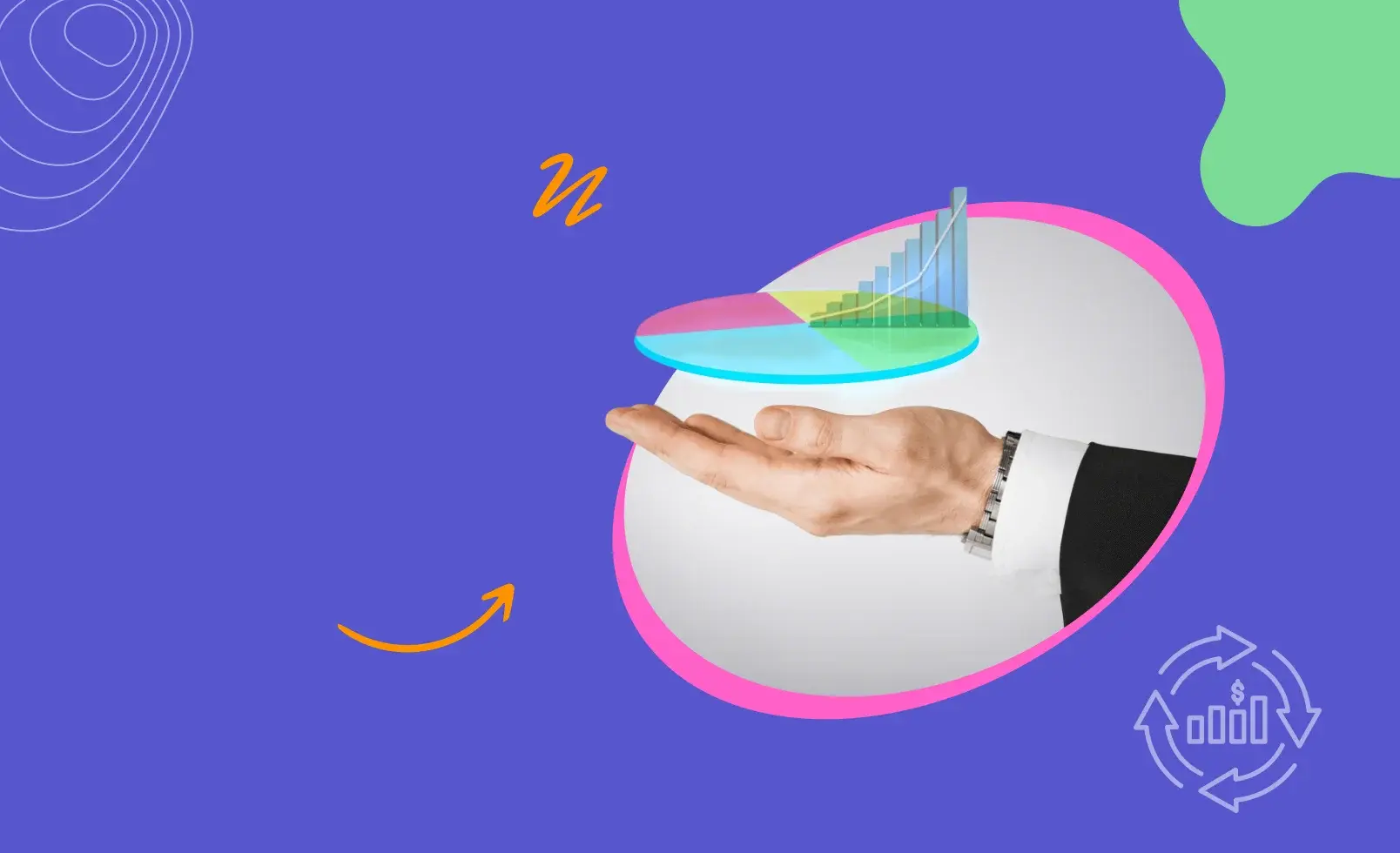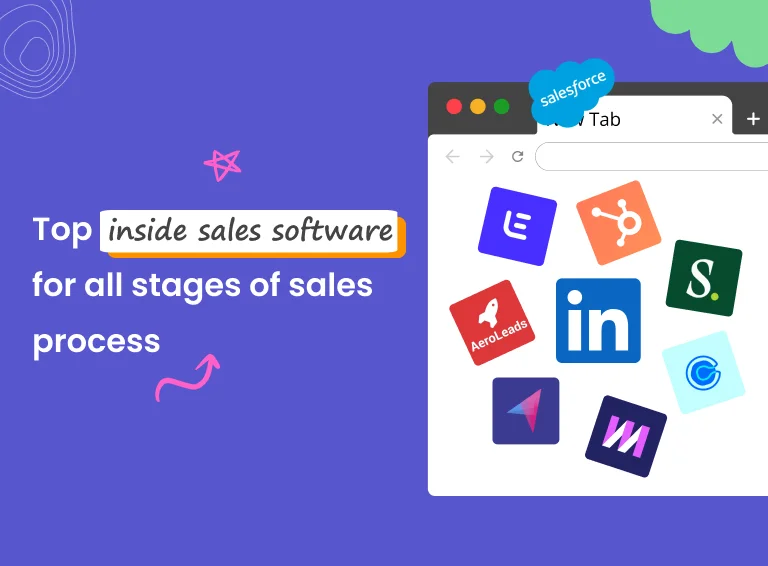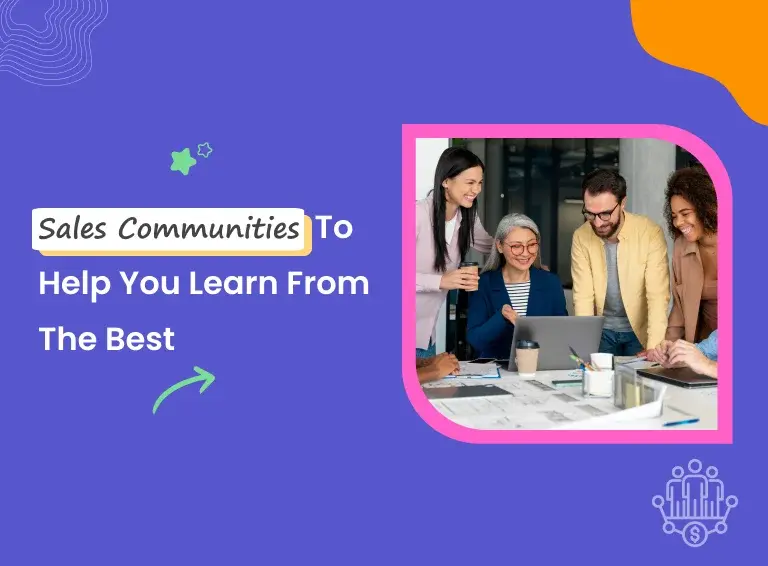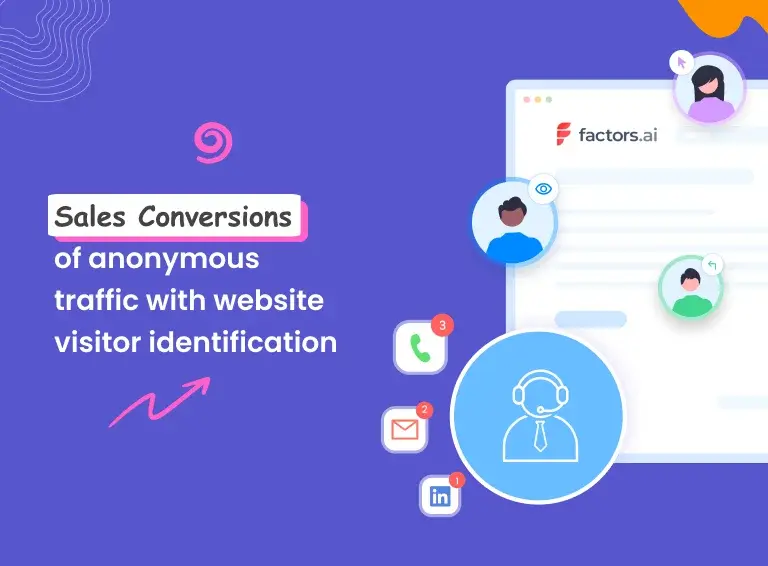Let’s do a quick survey.
- Have you ever purchased an ERP solution for your business?
- What did you do first to buy the product?
- Did you Google ‘ERP Solution’ and purchase the solution in the first result?
If your answers are ‘Yes’, ‘Googled it’ and ‘No’ in that particular order, you are not alone.
A majority of us would have answered the same.
But, why did you choose ‘No’ for the third question?
Simple. Purchasing a product or service for a business is neither easy nor impulsive. And it’s not just you buying the solution. Your manager, some senior management, some users and if your company has a team that takes care of enterprise tech solutions, they, too, will be involved in the buying process. So, it takes a good 6-12 months to come to a conclusion on the purchase of a product. From a salesperson’s perspective, that’s how long your sales cycle is.
An interesting insight from a survey of 886 sales leaders revealed that while it takes four months for 74.6% of businesses to sell to a new client, a massive 46.4% confessed that the same sale process could take well over seven months in some cases. Why?
We answer that and what a sales cycle is below.
What Is a Sales Cycle?
A sales cycle is the amount of time it takes to close a sale from when the prospect is contacted.
A B2B sale can be broken down into 5-7 crucial stages in which the lead is contacted, qualified, pitched to, negotiated with, and closed the deal by a sales rep or an account executive. Each sales stage will span a week, a month, or a couple of months, depending on the industry, the complexity of the product or service, the number of decision-makers involved, and the deal's size.
Typical Sales Cycle Lengths:
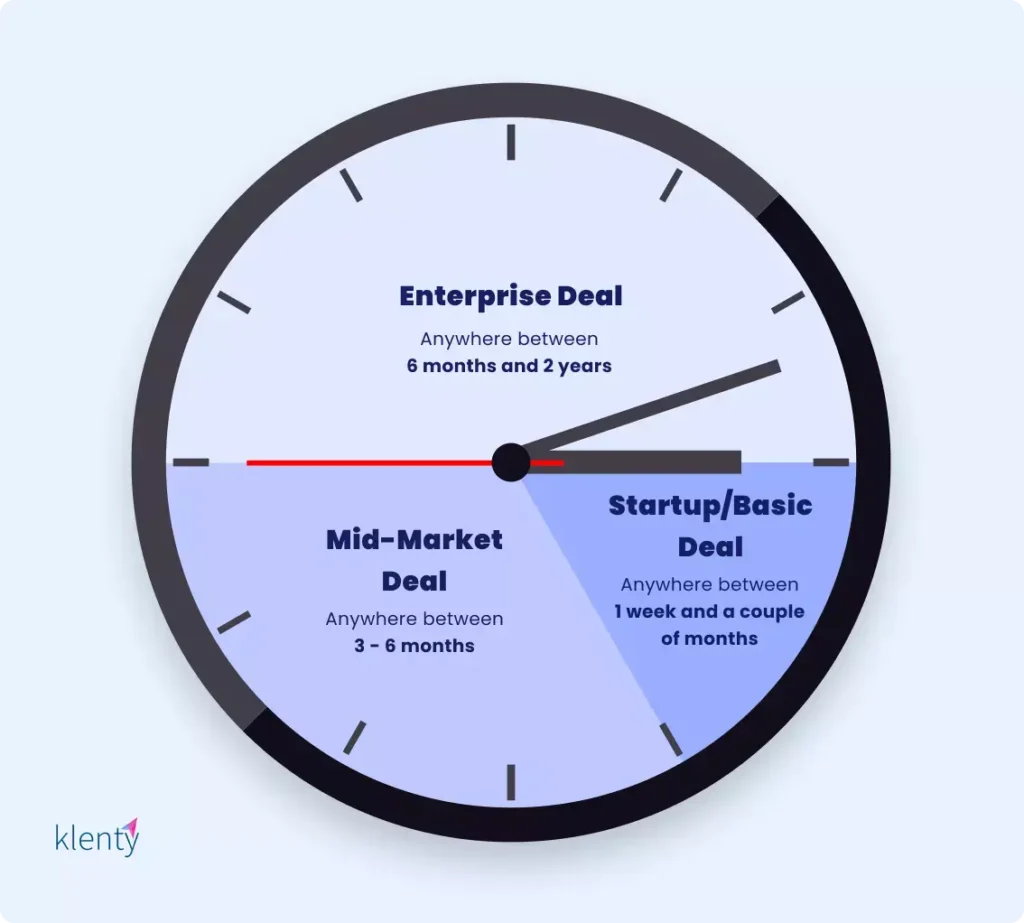
For an enterprise deal - Anywhere between 6 months and 2 years.
For a mid-market deal - Anywhere between 3 - 6 months.
For a startup/basic deal - Anywhere between 1 week and a couple of months.
But remember, it can vary.
Why Track a Sales Cycle?
Sales cycles are an indicator of how long you are taking to close deals as opposed to how long they should be taking–granted you have a base sales cycle length to work with. If you’re selling for the first time, you can begin with industry benchmarks, keep track of how long each sale is taking, and work on shortening the sales cycle from that point.
What Are the 7 Sales Cycle Stages?
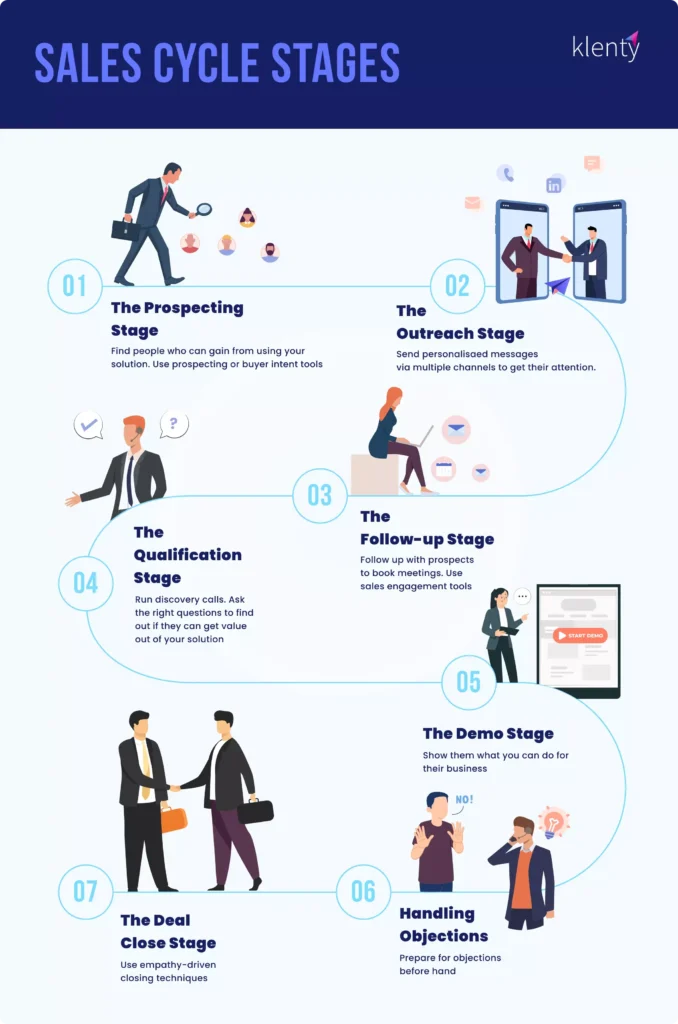
There are 5-7 common sales cycle stages that every sale goes through. These stages are the different steps initiated by the reps throughout the selling process. Each step or stage will have a set of activities that reps will carry out in order to push the sale to the next stage and the stage after that. The sections below are some of the most common stages of a sales cycle.
We say common and not set in stone because, as mentioned earlier, what stages you have in your sales cycle, depends on your industry and your preferences. Like, are you doing inbound sales or outbound sales, if you’re an inside sales team or an outside sales team, if you’re selling to just enterprises or SMBs, etc. We can only explain what the different stages of a sales cycle are - at a fundamental level.
Tracking the sales cycle at each stage
One general rule of thumb after you’ve defined the sales activities needed to be executed for each stage is to also find out how long a deal can stay at each of these stages. The early touchpoints you make in the sales process will take the most amount of time in a sales cycle, the objection handling and negotiation come at the final leg of the sales process and shouldn’t take a lot of time (less than a week for SMBs, a month with businesses catering to mid-sized businesses and probably more time for enterprises.)
Here Are the Different Stages of a Sales Cycle
I. Finding the Best Prospects
Before you start selling, you have to first find out who your ideal buyer is, what their problems and pain points are, and what they have to lose if they are not using your product. So look out for people who match your Ideal Customer Profile and build a list of prospects that you can reach out to. This stage could take up to a week’s time to be completed but it also depends on how many prospects you want to reach out to. Now you can choose to enter this entire list of prospects into your sales pipeline or wait until these prospects have been qualified further to become ‘opportunities’ and then add them to the pipeline.
‘Opportunities’ is a term assigned to leads when they’ve explicitly expressed their interest in solving a particular problem. Adding opportunities to the pipeline ensures that your pipeline is filled with people who have real interest in solving a problem rather than having a bunch of leads who may not even know of the problem/solution.
For example: You may have 100 prospects with a total potential revenue of USD 10,000 but once you’ve talked to them and qualified them, only 50 remain, and the potential revenue comes down to USD 5,000. If you had included the first number of prospects into your pipeline, you’d have a conversion rate problem in your hands.
Adding your prospect list to the pipeline only when they’ve been converted to opportunities saves your pipeline from becoming bloated. But then this stage will take a longer time to get completed.
How To Set up the Sales Process for This Stage?
1. Use a targeted list of prospects
Depending on the size of your product or service, you can decide who to target, and the size of your prospect list. If you have a more complex product or service that requires a bit of training to do, and is expensive, you might need to focus on a shorter, targeted list of prospects.
2. Choose outbound or inbound lead generation methods or both
Find out how you want to capture leads. Choosing one over the other or both depends on which stage you are as an organization, and which industry you’re in. If you’re in the SaaS business, a little bit of both works best to generate leads.
II. Reaching Out to Prospects
Run sales campaigns to those shortlisted prospects. Each sales campaign includes a cold email, follow-up emails, touchpoints via call and/or LinkedIn messages or even text messages. As G2, a buyer intelligence platform, puts it, in the age of the buyer, you have to do multichannel outreach to win buyer trust.
With sales engagement software, you can set up sales sequences with multiple prospects across multiple channels for defined time periods that you can choose.
How to prospect?
Every prospect will be at different stages of the sales funnel, it’s your responsibility to identify their interest/awareness levels, and set up touch points exactly when needed.
Talk about what’s in it for them, their pain points, and show social proof. Don’t write your message with the sole intention to sell your product or service. In short, it’s time to shed the spray and pray approach with a templated email and reach prospects wherever they are looking for solutions with a personalized message.
Depending on the who, the how and the scale of your outreach, the time it takes to book meetings would vary between a week to a couple of months. That’s how the famed ‘always be prospecting’ quote came to life. Because you have to always be prospecting as a failsafe for this stage. In case you’ve not booked enough meetings even after your sales sequence ran its course, you need a pool of new prospects to reach out to.
Pro Tip #1: Set up at least 8 multi-channel touch points over the course of a month and half with ample delivery windows after each message.
So how do you do outreach that gets more replies?
- Personalize Across Multiple Channels using your prospects’ names, company names, their LinkedIn updates, any news regarding their industry or their social media activity as trigger points.
- Revise Your Sales Pitch to Answer This Question, “Why should the reader care?” When pitching to the prospect, always try to help them out with their problems rather than talk or sell your solution. Tell them what’s in it for them.
- Follow and Religiously Maintain Email Hygiene. That means, have a professional ‘from line’ –full name, company name, and a formal email address, having an email signature that gives prospects information about how to reach or research you, and for legal purposes, an unsubscribe link.
- Prioritize Email Deliverability if you hinge hitting your targets via cold email outreach. It’s very important that your emails reach the prospect’s primary inbox otherwise your outreach efforts are in vain.
III. Following Up With Prospects
Follow-up emails are simple if you understand some basic rules. Like answering common questions that spring up in the mind of the email receiver, “Why should I care?” or having a call to action that is clearer than a sunny day. If you stick to these ground rules, you’ll get replies. It will also ensure that you’re writing a gentle, non-threatening, non-interrogative follow-up email, the ones that get people to respond.
You could follow up via LinkedIn, call, text or email. But make sure you do follow up. This is not the 60s when you could knock on someone’s door and sell them a Hoover. People nowadays already know about the solutions in the market, and they are constantly bombarded with sales messages. So you have to ensure your messages take front and center of the inbox and get their attention.
Here are the ground rules:
- Use a pattern interrupting subject line
- Keep your introduction relevant and contextual
- Mention why you’re emailing
- Have a low-friction CTA
- Include a self-sufficient CTA
Pro tip #1: Since email exchanges happen over the web, it’s easy to sound as soulless as the machine you’re typing the email in. So remember to write your email like you’re talking to them directly. Leave the formality at the door.
How To Improve Your Nurturing Process:
1. Get Useful Sales Enablement Content :
Get useful sales Enablement Content from your marketing team. A 2022 report by buyer intelligence company, G2, states that buyers are now more than ever opting for self-service models to buy software. Sales enablement content is the kind of content that helps the prospect solve a particular problem–that could be finding the right tool, looking at alternatives, choosing between similar products or services, industry reports, detailed and in-depth dive into a topic that matters to them. That means the sales enablement content you’ve created will help buyers make a decision for themselves. But that kind of content combined with your outreach can do wonders to move the decision-making process forward and shorten your sales cycle.
2. Follow Up According to a Prospect’s Intent:
An intent-based sales sequence works on this simple concept - your outreach should be based on the prospects’ buyer journey. Your messaging should be both relevant and personalized based on their interest levels. Eg: Create a sequence of sales messages for those who signed up for free trials and another to nurture people who signed up for an ebook.
3. A/B Different Email Strategies:
If you ever wanted to read your prospects’ minds, this is how. Imagine you could learn which subject line or email body works best to get more opens or replies. To run A/B tests, you have to create two emails identical in all manners except the factor you want to test, and you need a sales engagement software.
IV. Qualify Your Leads by Running Effective Discovery Calls
Qualification usually happens throughout the sales process with every lead at every stage all the way from when you start prospecting. Nevertheless, if you’re doing outbound sales, since the prospect is a total stranger, you’ll need to make sure they have the need for a solution.
In the SaaS world, where prospects have a plethora of options to choose from, a good discovery call can help them find the right solution, and help salespeople set the course for long-lasting relationships with buyers.
During a discovery call you should focus on finding the prospect’s pain points, goals, their hopes, fears, and operating boundaries – to assess if your product can help them succeed. By running a good discovery call, you avoid wasting your customer’s (and your) time with a low-value pitch.
What should you find out in a discovery call?
- Who the prospects are, what they need, and what they prioritize as a company
- How their teams are structured
- What do their buying process and workflows look like,
- Who within their organization would (and could) use your product
- How the organization is funded, or what its revenue model looks like
- What their short and long term plans are
V. Conducting Demos or Presentations:
At this stage, you’ve got the interest and the attention of your prospects to show them what your product or service does. Depending on what your sales process looks like, it may be a physical presentation carried out by sales reps, or an online product demonstration. Basically, a new-age version of a sales pitch. Historically, a sales pitch is a speech that you have to deliver (perform) to persuade your prospects to buy something.
But buyer behavior has changed over the years, now it’s all about building trust. To do that best, rather than pitching your product, you have to shift your mindset to help them out with problem-solving. Show them what tangible or intangible benefits they can gain from using your product or service.
When Making Your Product or Service Pitch, Follow These Basic Tips:
1. Make sure your prospects show up: As we learnt already, sales cycles can stretch for weeks or months, so be sure to remind prospects of your appointments. Don’t just show up for a meeting without double-checking in the last 24 hours that they’re still on for the presentation.
2. Take stock of what you know about the prospect.
- Who was their first point of contact in your organization?
- What material has already been shared with them?
- If they signed up for a free trial in your application, what have they already done inside the app?
3. Plan a 3-point agenda to run the presentation: Based on what you know of the prospect’s needs, what are the 3 most important takeaways you need them to leave the demo with. They will neither understand nor care about a laundry list of all your features. Answer this: Why are they attending this demo? Write those points down and make sure that you spend time on the top 3 things that matter to them, and share this agenda with them so they, too, can stay engaged in your demo.
4. Build your sales pitch like a story: Your presentation, just like a story, has to get their attention and keep them interested throughout the process. It should have a beginning, middle, and end. And an arc, if you will, of how your product’s benefits can produce results for their team.
5. Finally, don’t hesitate to ask for commitment: What would you like them to do next? Are they ready to buy? Do they need a trial? Your ask should be aligned with what stage of the sales funnel they’re at. So if this is a new problem that you just uncovered for the prospect, they may need more social proof to improve confidence in the solution, so the next step is to send them detailed case studies. But the objective (depending on the situation) is to move them at least 1-2 stages down your sales funnel/process – if not all the way to a purchase.
VI. Handling Objections
We have to concur with American author and salesperson, Zig Ziglar, when he said, “Every sale has five basic obstacles: no need, no money, no hurry, no desire, no trust.” So much so that it takes between a couple of days and weeks to wind up talks. It’s a period during your negotiation where you’re handling objections based on a variety of factors.
You can, of course, speed up these talks by handling objections better. A pro tip is to write down common objections you and your colleagues have been handling and brainstorm how you can turn the tables in those crucial moments, and come up with a list of techniques you can share among your colleagues–whether new or old. That way everyone can inch closer to closing the deal sooner.
General thumb rules of how to nip objections in the bud and improve your sales cycle:
- Objections based on time: Be considerate of their goals and priorities. Everyone’s drowning in them. Use that as an opportunity to position your product as a solution to their top 3 goals/priorities. Or move the conversation to someone else in the organization who may find this a top priority.
- Objections based on need: Dig deeper by asking more questions to unearth what the real issue is. Is the prospect really satisfied with how things are working for them currently? or are they apprehensive about adopting a new product? Is it inertia or loss aversion? If it is inertia, they may be overlooking a problem/opportunity facing their business. The trick here is to switch gears from selling your solution to making sure they truly understand the magnitude and depth of the problem/opportunity and its impact on their business. Only when you cross that bridge do you position your product as the solution.
- Objections based on money: Sometimes–actually a lot of times–a prospect uses the too costly route to drive a bargain. Or maybe it’s because they don’t realize the value of using your product or service or don’t see the ROI. Either way, it is important to realize that the lack of budget need not be a deal breaker. It may just require a creative pricing solution.
VII. Closing Deals
This is the final leg of your sales cycle–when you finally move to close the deal even if the prospect is stretching the deal out. Win or lose, you have to close it. Sometimes, sales cycles can get longer because deals are stuck in the close stage–where the AE refuses to close a deal solely because the prospect reached here.
In reality, you may have to pull the plug on certain prospects if they’ve not replied to you in a good while. Of course, you could throw them a line one last time to reignite the deal but if they don’t express any confidence even after that, it’s time to pull the shutters down on that deal.
Tips to win negotiations at sales:
- Open the close conversation irrespective of how awkward it may be. You’d ideally want to have the upper hand in this negotiation,
- Don’t play hardball, that doesn’t roll (see what we did there) with today’s buyers. The good people at the negotiation program at Harvard say that a hard-bargaining back-and-fro negotiation can easily deteriorate into “impasse, distrust, or a deal that’s subpar for everyone involved.”
- Katie Shonk, an expert in negotiation and a researcher at Harvard Law School, has three study-backed negotiation tips that can increase your chances of winning over deals:
- Focus on their losses not gains. Research suggests that people are more motivated to avoid losses rather than gains because losses weigh heavily on people’s minds. So frame your pitch in a way that highlights their losses rather than focusing on the money they can save.
- Offer concessions in chunks. People prefer to gain money in installments rather than to gain it all at once but lose money in lumpsum, research revealed. Conversely, they preferred to lose money in lumpsum than to lose money in installments. Therefore, when making an offer of your product or service, offer discounts or freebies in a manner that they gain in installments, and present the gain over a period of time as an individual percentage of savings.
- Reel back on the reasoning. It was found through research, more than 4 decades ago, that a weak justification was more effective than none. But a recent study shows that people tend to rebel against more significant requests with weak justifications. So if you’ve already convinced your prospect of the product and its list of features, you can simply make your first price offer without a reason.
Pro Tip: Move the prospects that went cold to a list where you can store similar prospects and initiate nurturing sequences for them 6 months to 1 year down the line. The objective is to avoid deals from spending too much time in this stage.
To Conclude
The biggest issue most companies face is getting a lead to say, “Yes,” more quickly or waiting for leads to respond even after months of crickets. If you want to shorten your sales cycle, you have to take action at each step of the sales process.
- Define the exit criteria for each stage of the pipeline clearly–so leads are not stagnating in stages
- Conduct pipeline reviews once or twice or three times a week with the team and with individual reps to keep track of deals, and see if you’re on track to hit the quota
- If you spot lower pipeline conversions at each stage, start prospecting
- Create pipelines for different demographics and use cases since their sales cycles may be different. This will give you a more accurate picture of whether you’re on track or not.
That’s all folks. Do let us know in the comments if we’ve answered all of your questions regarding the sales cycle or you’d like to know more.
FAQs
What is the average sales cycle length?
Why are my sales cycle long?
1. Firstly, is it longer than the industry standard?
If yes, to identify the roadblocks or pinpoint the causes, you can track how long your deals are caught up at each stage of the sales process. This will also help you spot deals that are stagnating in the pipeline.
2. Hire interns/assistants to help your SDRs with prospecting (the stage that takes the most amount of time for any movement) and getting information to personalize so you can improve your outreach and prospecting process.
3. Don’t put all of your leads in the same sales pipeline if you’re selling to multiple ICPs in different demographics and different use cases. Since the standard sales cycles for all of those scenarios vary it wouldn’t be logical to track their sales cycles on a single yardstick. You could make different pipelines to track different types of accounts.
